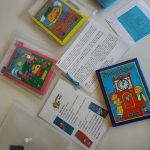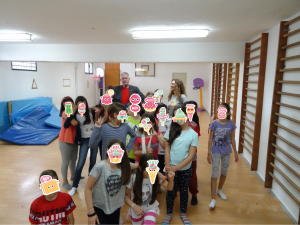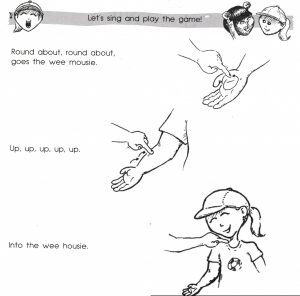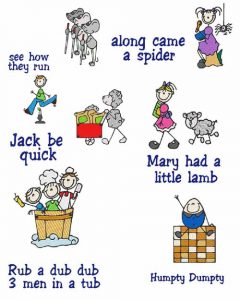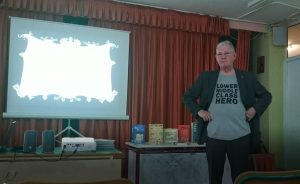I’ve always been interested in Nursery Rhymes for their multiple benefits, which so vividly David Gibson presented on various occasions (see Nursery Rhymes).
So, when I found these nicely illustrated little books on offer I bought 20 and started a reading project with a 4th grade class: every fortnight/week students would have to read a book, maybe listen to the CD which accompanied it. This CD was recorded with the help of my dear friend David who kindly read the Nursery Rhymes for us. There were 6 titles in the series and each packet also contained a leaflet giving some general, introductory information on Nursery Rhymes and some info on each Nursery Rhyme: when they were published, the story (if there is one) behind them, and the explanation of some unknown words. Every child had to present one of the Nursery Rhymes they liked- either recite it or play it or sing it, either alone or with another classmate. Every week I would choose a Nursery Rhyme and find a worksheet on it from the big variety there is on the Internet, or make my own, and teach the corresponding rhyme or song.
We also danced to the Grand Old Duke of York, following the pattern of this video:
Folk Dance – Grand Old Duke of York (England)
Here is a short presentation of the things we did throughout the year:
Using Nursery Rhymes at school
It was a very enjoyable project. All the students were involved with enthusiasm (even boys, whom I expected to be more reluctant!) and had lots of fun! At the end of the school year we presented ‘The grand old Duke of York’ and other Nursery Rhymes to the whole school and our special guest, Mr David Gibson!
I presented the project (actually complemented David Gibson’s wonderful talk with this educational example) on various occasions (TESOL Macedonia-Thrace, TESOL Greece, Ekadeve) and it received a warm welcome by colleagues! (interview)
You don’t have to buy books, of course, to make this project, since there are so many things you can find on the Internet and do with Nursery Rhymes!
You can find lots of Nursery Rhymes here:
The Project Gutenberg EBook of The Big Book of Nursery Rhymes, by Various



